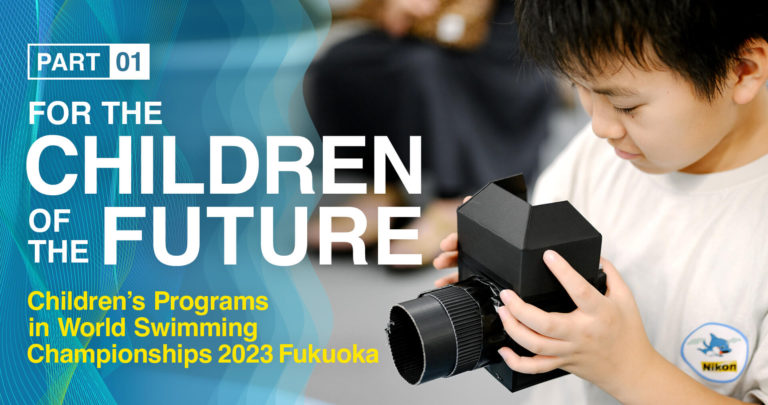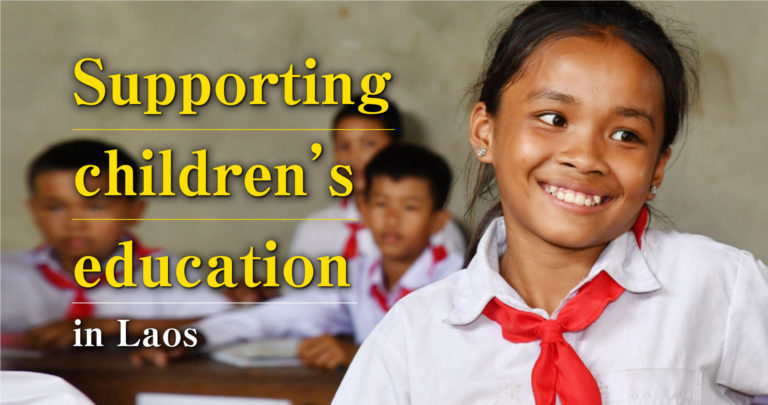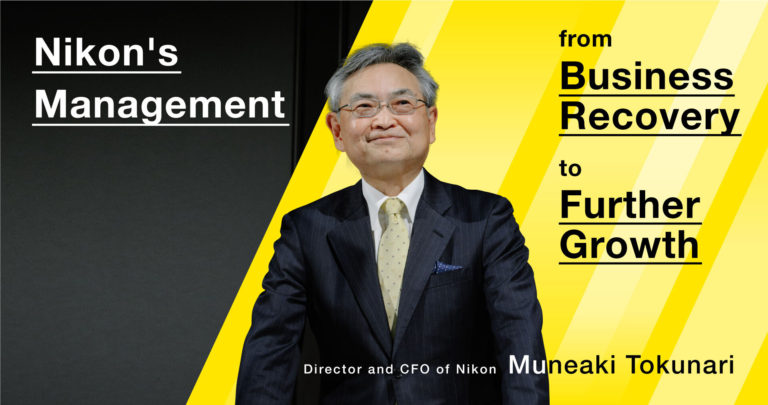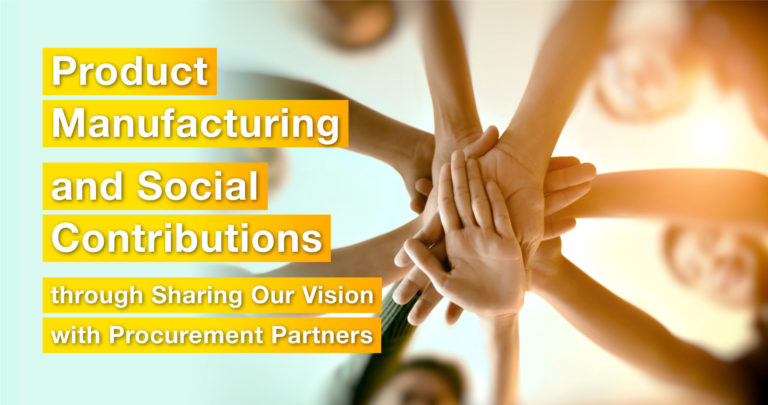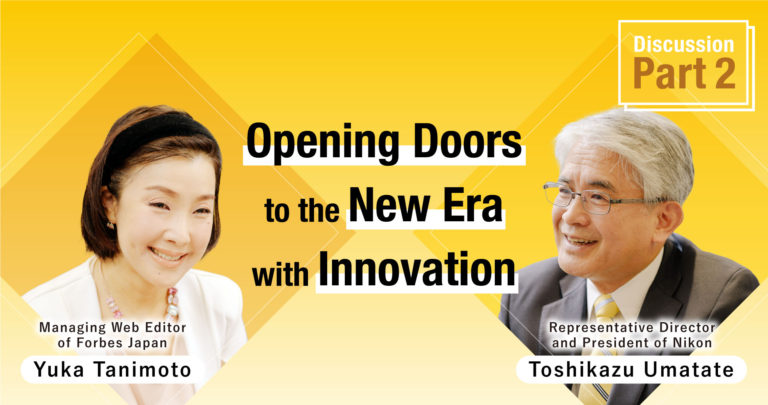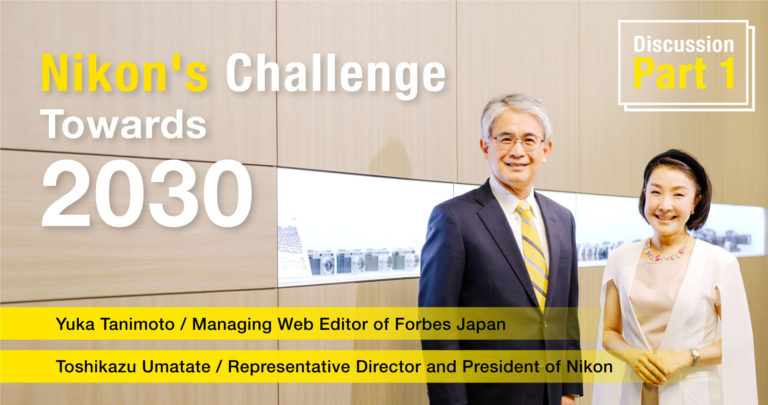Corporate Strategy
Part 2: Children’s Program at the World Aquatics Championships – Fukuoka 2023 —Expanding the World Children See—
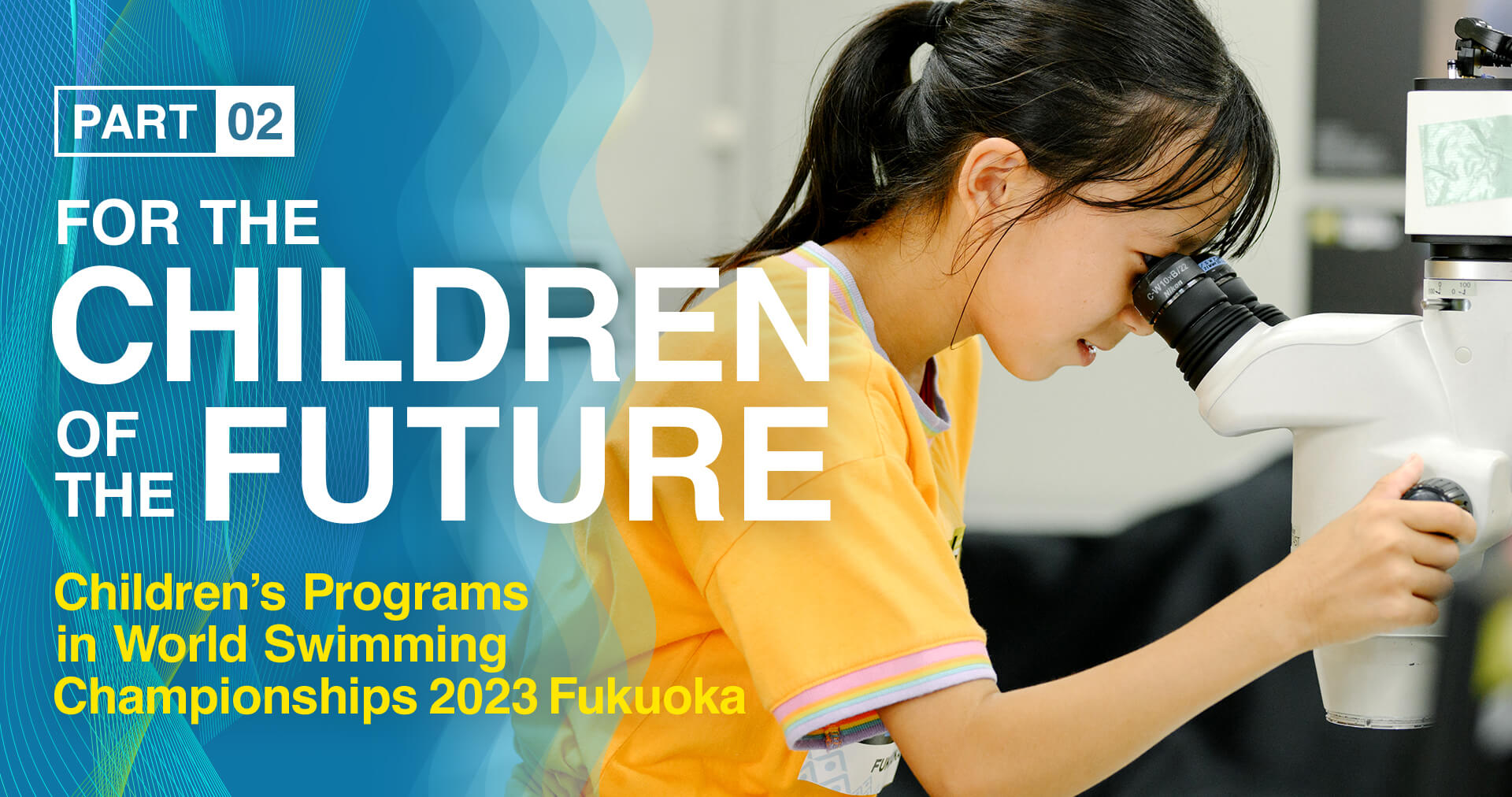
The World Aquatics Championships - Fukuoka 2023 saw fierce competition (held from July 14–30). Nikon also cheered on athletes in their pursuit to push their limits in the field of sports. Additionally, through our business here at Nikon, we aimed to help children grow and enjoy learning, in hopes that they gain a newfound aspiration as they lead us into the future. We contributed to enlivening the venue by conducting various activations geared towards children, such as our Children’s Program.
This article reports on Nikon’s initiatives throughout the World Aquatics Competition. In Part 2, we will bring you scenes from our workshop held on July 26, as well as interviews with operation staff.
For Part 1, click here
The “Professional Camera Challenge” to Shoot Athlete’s Competitive Moments
For this particular day, eight elementary and middle school students residing in the Kyushu region were invited to experience a backstage tour and two workshops.
The first stop was the water polo practice facility, located near the Nikon booth. Here, we conducted the “Professional Camera Challenge,” where children took photos of athletes with cameras used by professionals: the Z 7II—a camera often used in sporting events.
After the instructor taught students how to hold, use, and shoot with the camera, the students quickly got to work on their shoots. Each focused on different areas, with some pointing towards players as they aimed towards the goal, while others took pictures of coaches standing on the poolside. After the shoot, the students looked over their pictures with professionals to receive feedback.
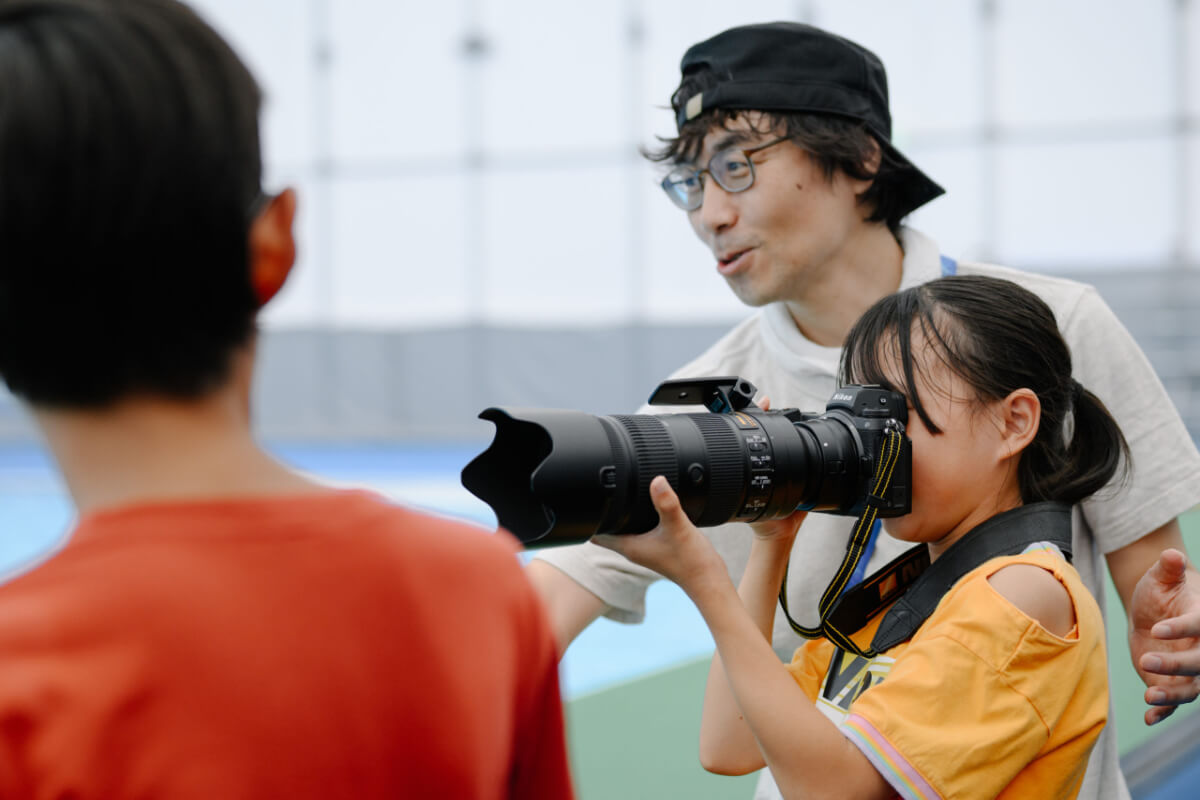
The students—while surprised at the weight of the camera—rivaled the focus of professionals as they intently looked through the finder.
Looking back on how they enjoyed the event, one student noted, “I felt like a professional photographer. I think I got good shots,” while another commented, “I was told I have ‘good composition.’”
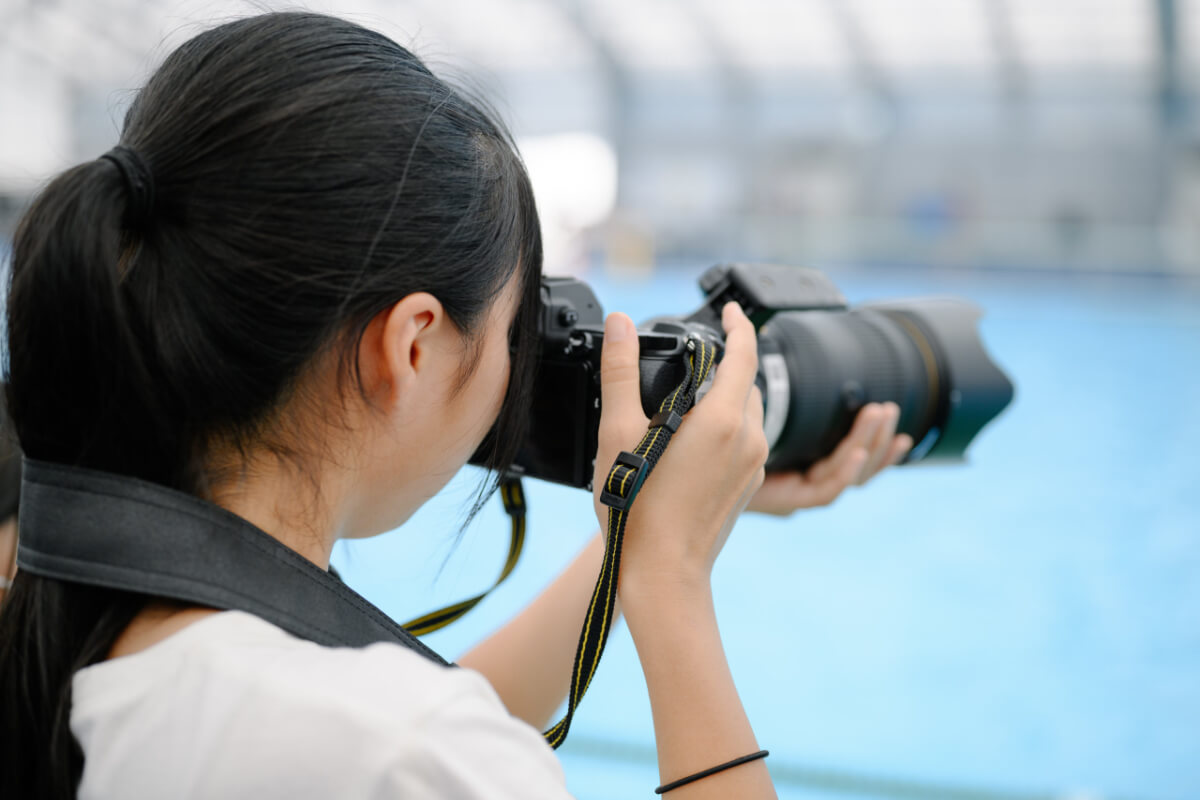
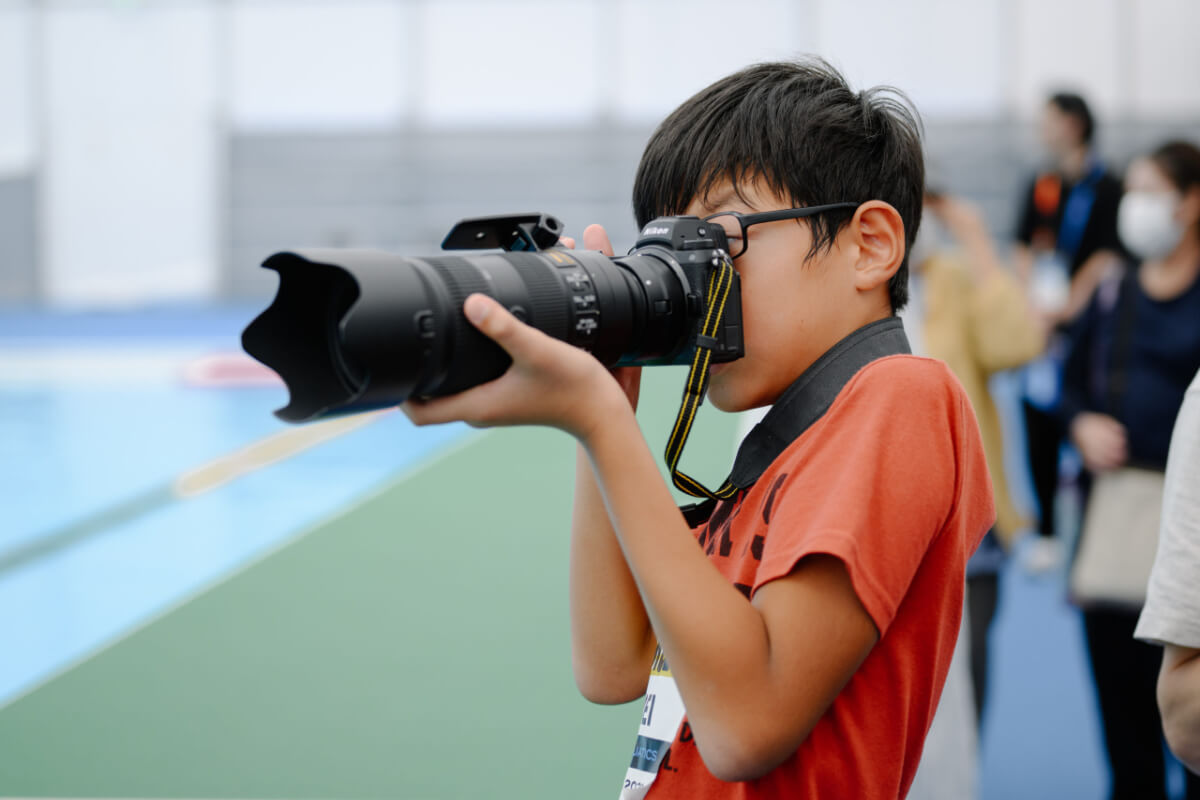
Closer, More Direct—The World of Microns Seen from the Microscope
Next, we led the children to the world of microns—the “Microscope Workshop“ using Nikon’s stereo microscopes to give them a glimpse into the world of various creatures and surrounding environments.
“Microscopes are used for a wide ranges of purposes, such as for testing viruses and observing cells in the healthcare field, for measurement/examinations of products at factories, and so on.” The children listen to the instructor, a Nikon employee, as six microscopes lay before them. These microscopes are also used in the front line, such as factories with precision machinery, or at healthcare worksites providing pathological examinations. The objects they will be observing include insect samples, shells, dried flowers, athletic swimwear, and killifish eggs.
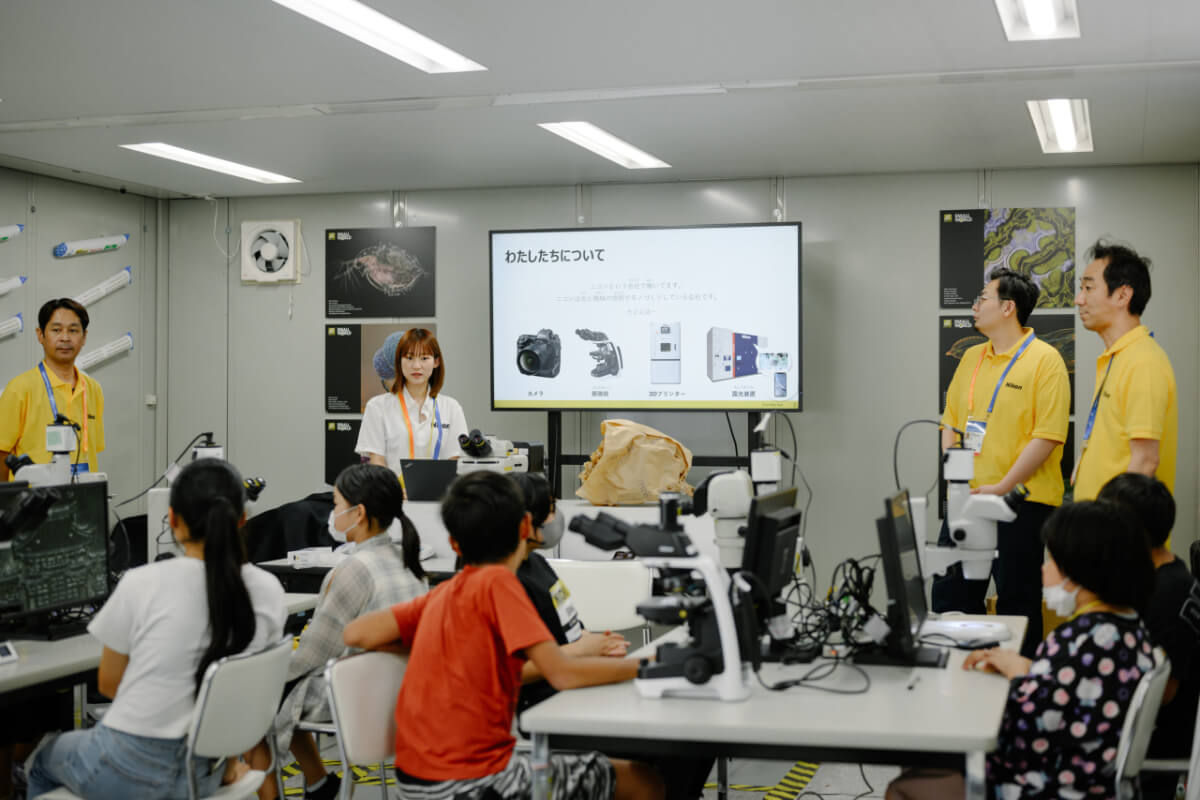
First, they children observe the prearranged objects. Most of them had experience with microscopes in science class, so they had no problem adjusting the lens to get the desired focus. The workshop also included learning how to look into the microscope through the right eye, while sketching with the left eye.
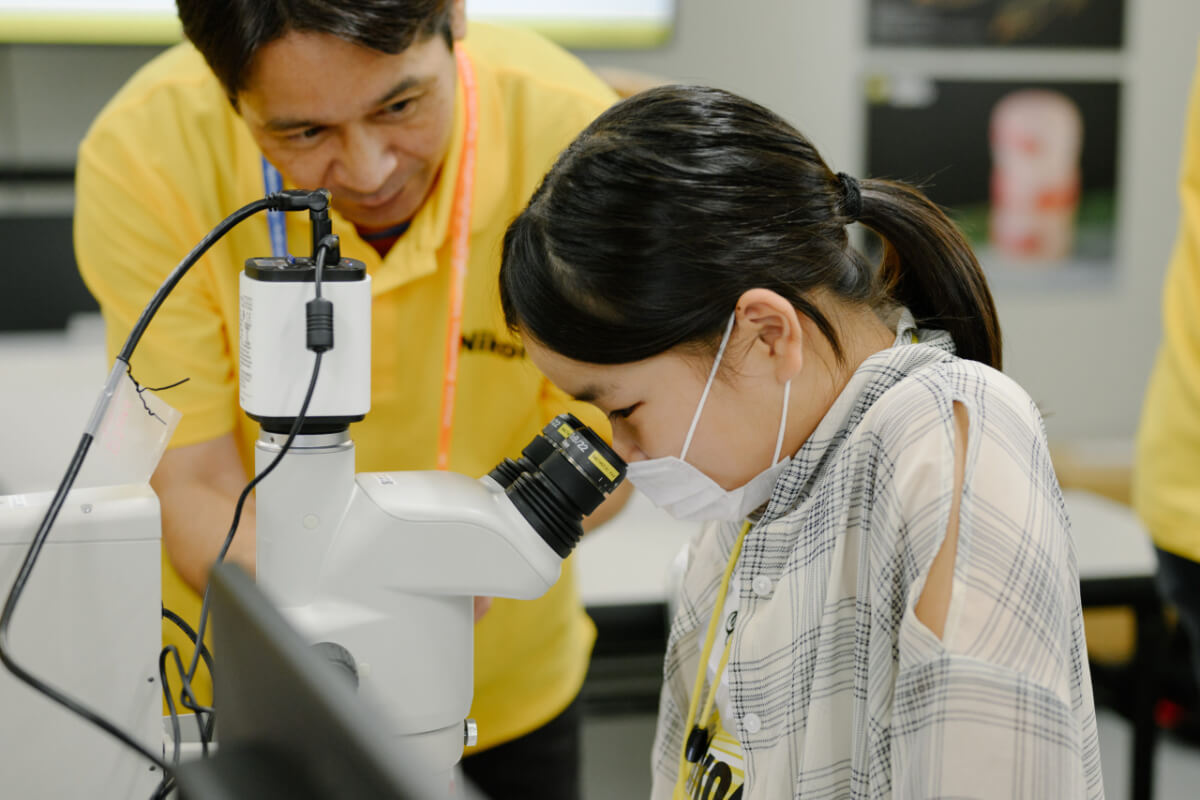
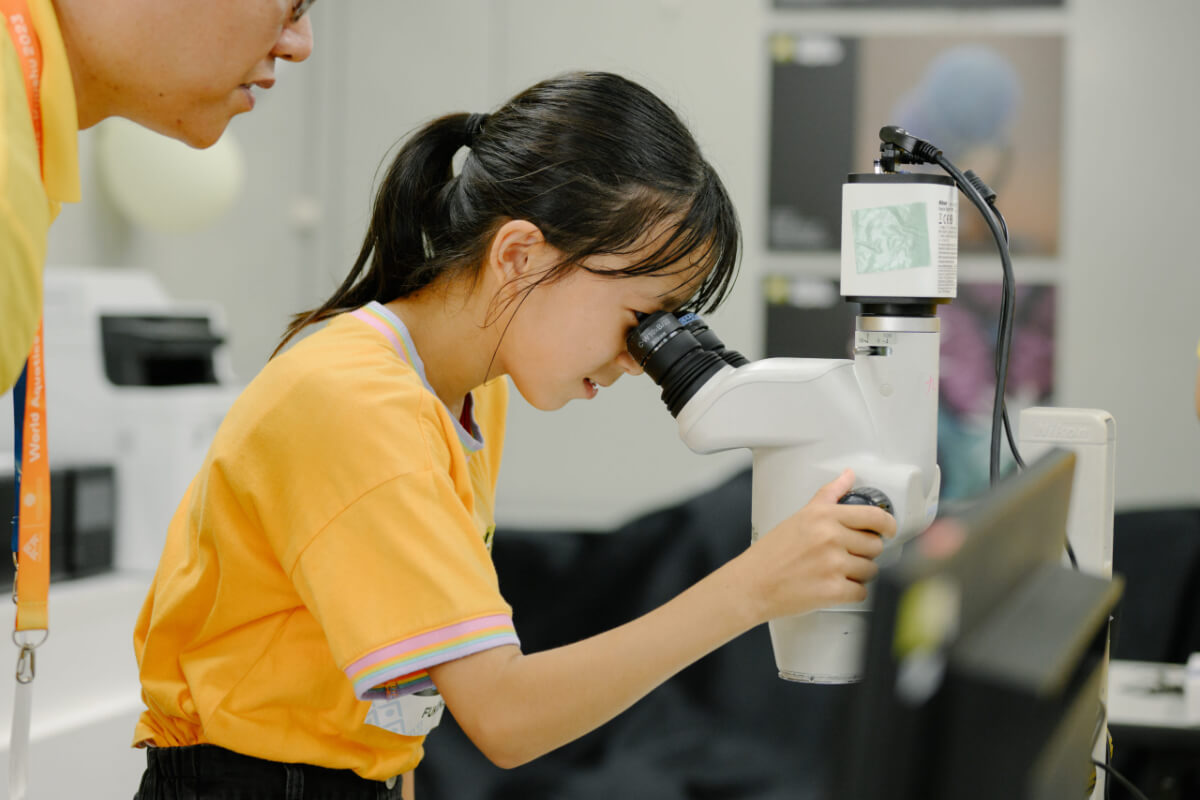
After getting acquainted with the world of microns, the children observed some of their personal belongings with the microscope, including 500-yen coins or 1,000-yen bills, as well as stuffed toys, smartphones, and any other objects that caught their eye to take a closer look into objects we see around us every day.
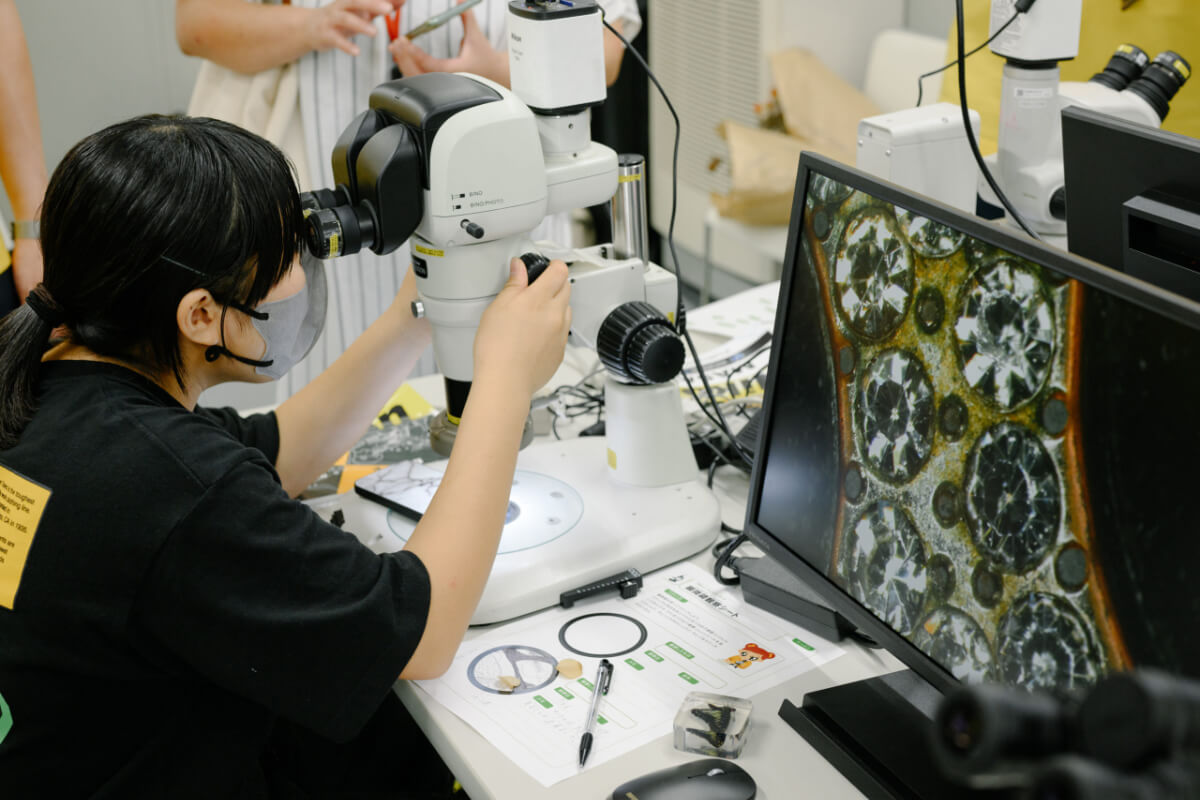
This student observed sparkles on her smartphone case in its true form
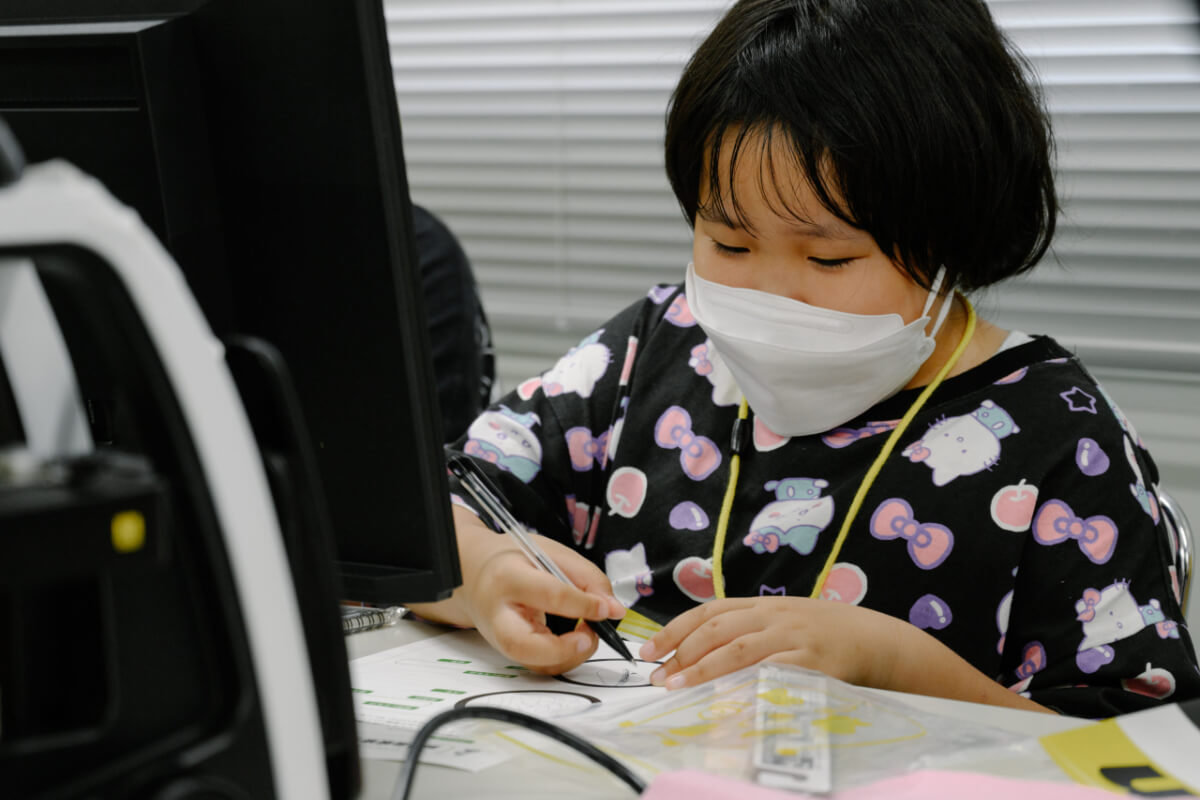
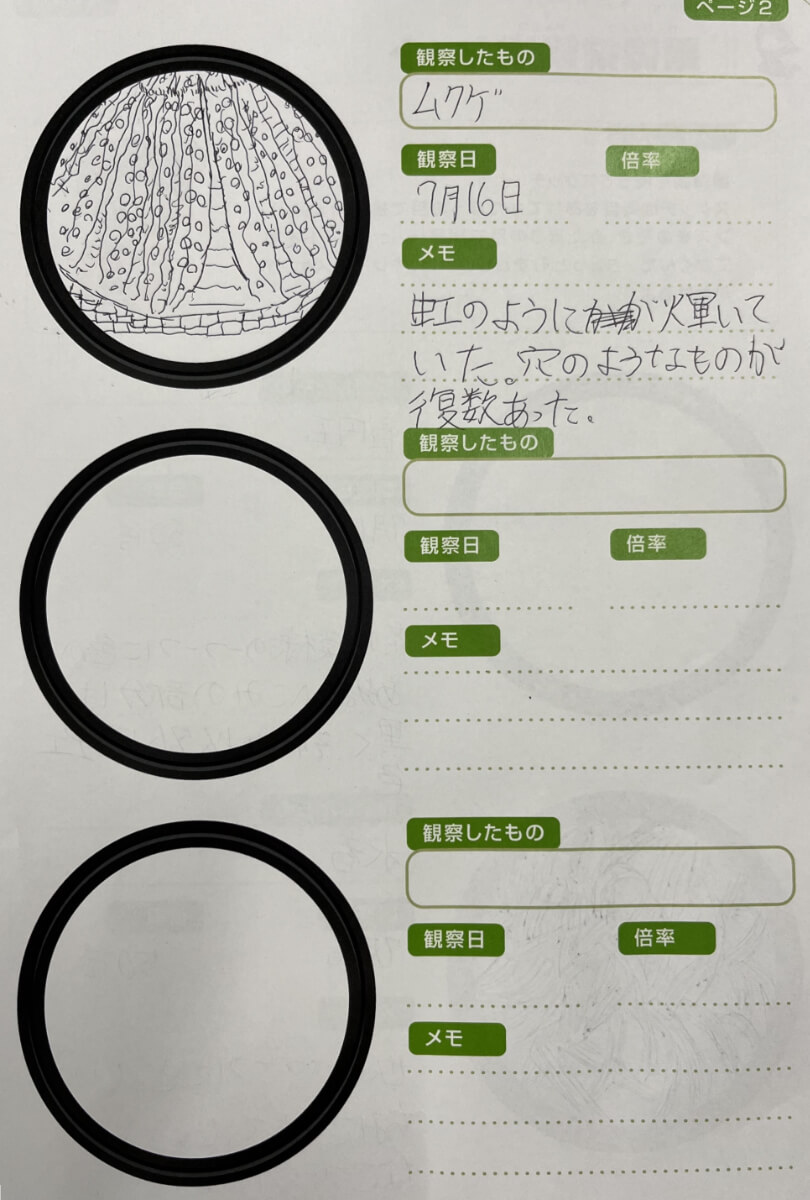
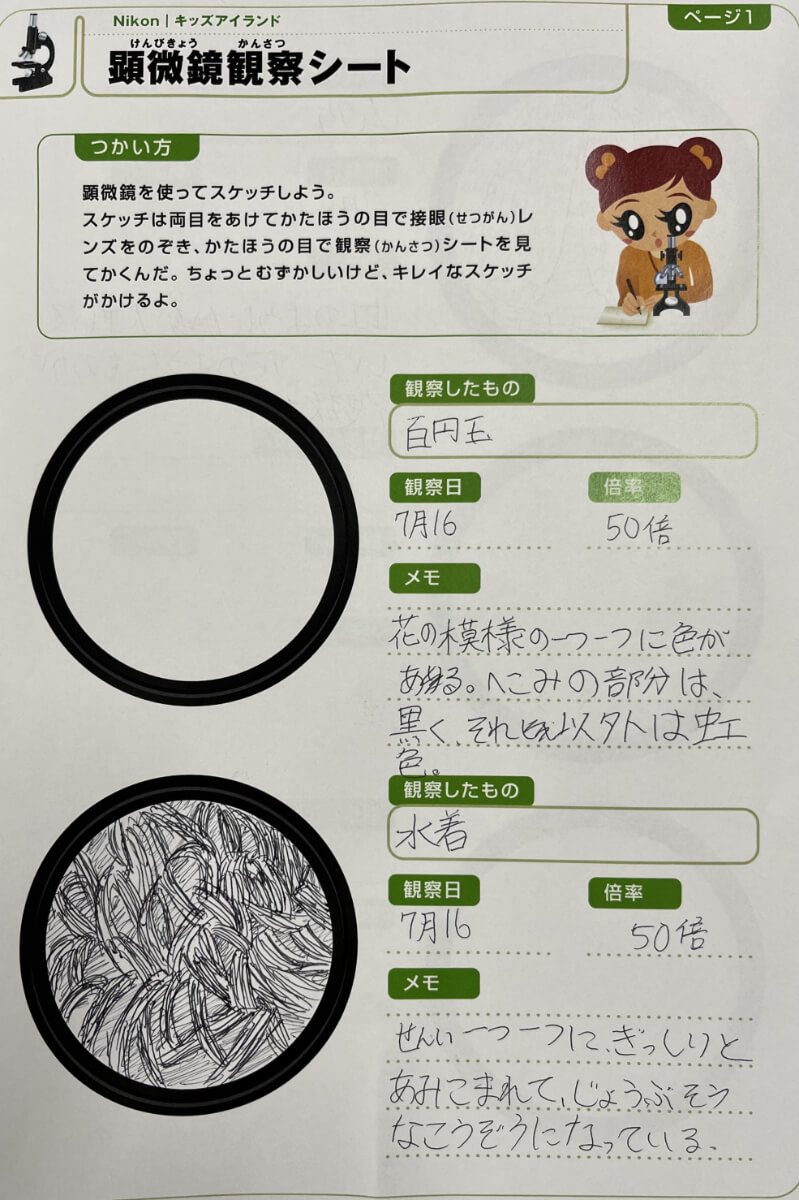
Reporting their observation with sketches, the students precisely depict their new encounter with the world of microns.
A sixth-grader named Masaki, who explains how excited he was for today because of his love for cameras, observed the surface of stuffed animals and other toys. “I observed more details than I can see with my eye,” he notes. “It was a little weird. I want to try observing more things.”
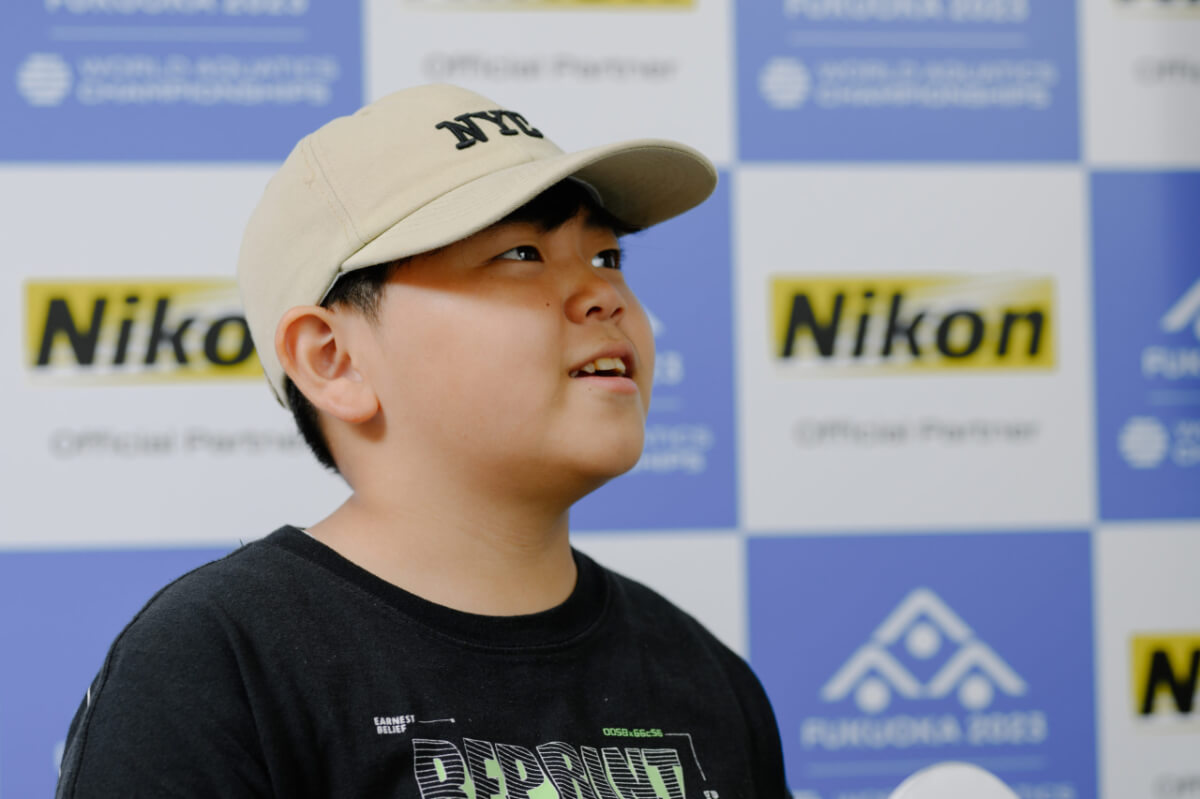
An eighth-grader named Erina, who observed butterfly samples, is seemingly happy as she looks back, saying, “I was able to take time to observe even tiny details in the wings.” She also observed the rhinestone decorations on her smartphone, to which she smiles and notes, “They were pretty.”
Throughout the workshop, the children experienced a look into two different types of “shots” not common in our usual daily lives: one through admission to the backstage of the competition and another through observing the world of microns. From their reactions, it seemed to become a good opportunity that inspired them to take even a closer look.
The following are some thoughts from the students who participated in the Children’s Program.
“The Microscope Workshop made me want to know more and ask, ‘What could this object look like?’ It was great motivation to decide on my independent research topic.”
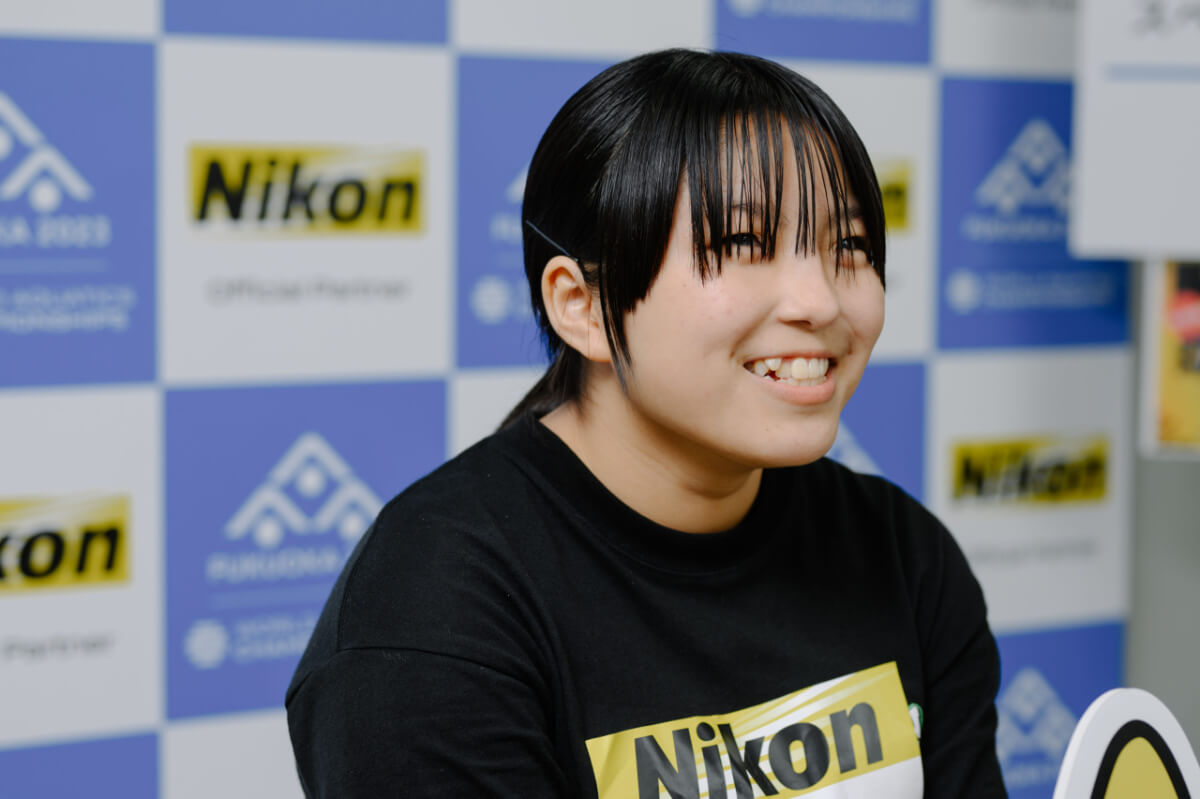
“I’ve done swimming since I was little, so I was happy to be able to watch the world competition. I learned a lot from the world’s top swimmers. I have a swim meet tomorrow, too, so I want to do my best.”
“I’m glad I could see Japanese swimmers swim. It was much more dynamic in person than on the screen.”
Nikon’s Mission to Bring Excitement through Our Products and Services
he operation staff reflected on their thoughts behind the Children’s Program and of the success of the event.
General Coordinator: Kumiko Saito, Group Manager of the Corporate Branding Group, Design Center
Camera Workshop Leader: Hikari Yamada, ID Group, Design Center
Microscope Workshop Leader: Norio Ohba,
Corporate Vice President, General Manager of Bioscience Sales Division, Nikon Solutions Co., Ltd.
Background of Hosting the Children’s Program
Saito : At Nikon, we are constantly thinking about where and to whom we can offer our contributions in our business activities. This program was conducted in hopes to provide children—the leaders of our future—with an experience they do not typically encounter and help them to create summer memories or gain some inspiration.
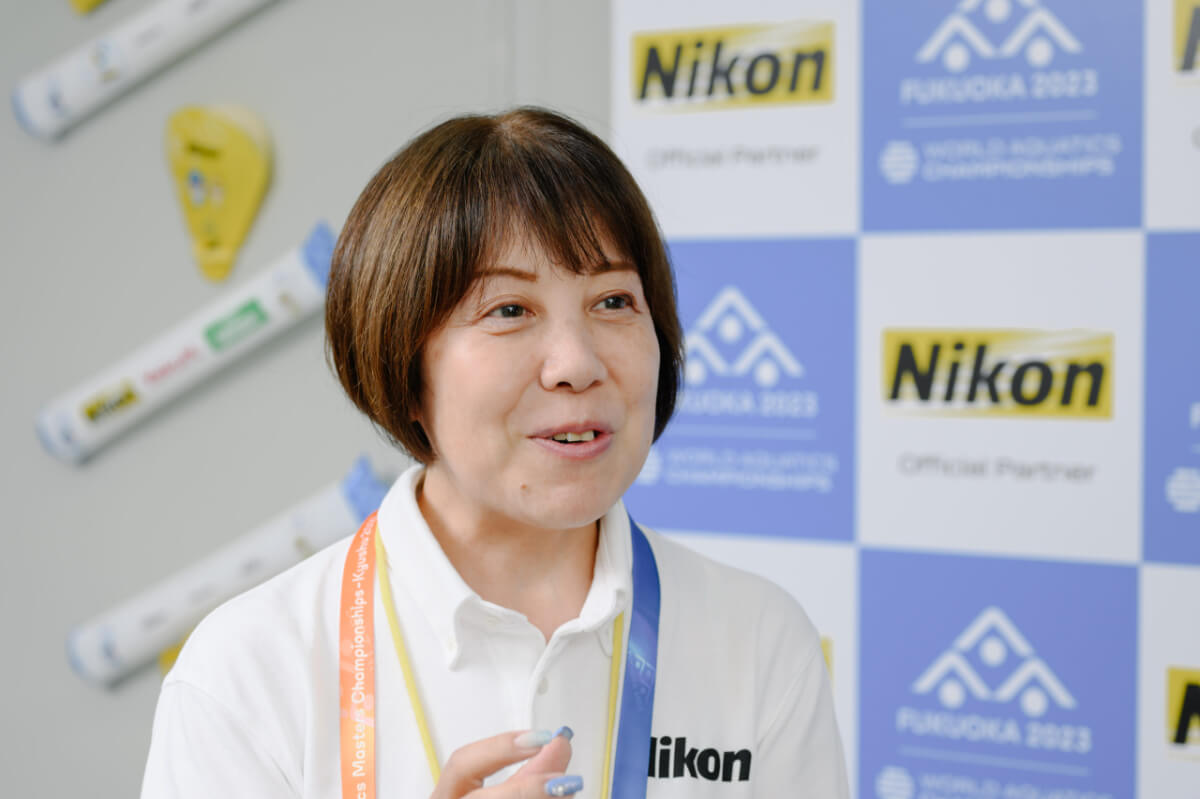
Our Convictions Behind the Workshop
Yamada : The Children’s Workshop to create camera obscuras with members of the Design Center has been a tradition for 15 years. With the COVID-19 pandemic, this became our first workshop in three years. Our purpose is for children to get familiar with the unique powers of lenses and create a place for them to encounter design work.
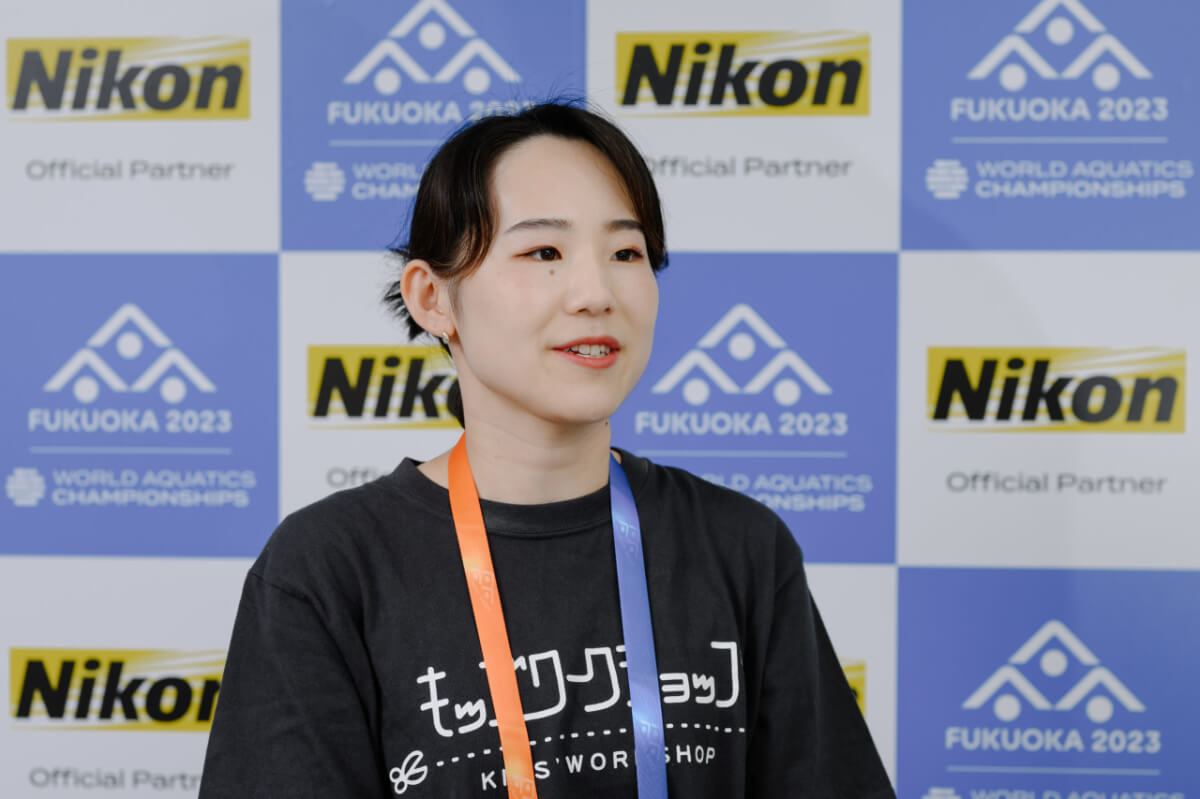
Ohba : This was our first time hosting the Microscope Workshop. While we prepared many different kinds of subjects, the killifish egg and creature cells were included with hopes that they gain an appreciation for the lives of even the smallest beings and learn that all plants and animals are made of cells. Also, by including cash, we hoped they could see just how much detail go into designing. Our mission was for the students to find new discoveries and surprises of everyday objects like these and see them from a new perspective by observing them with microscopes.
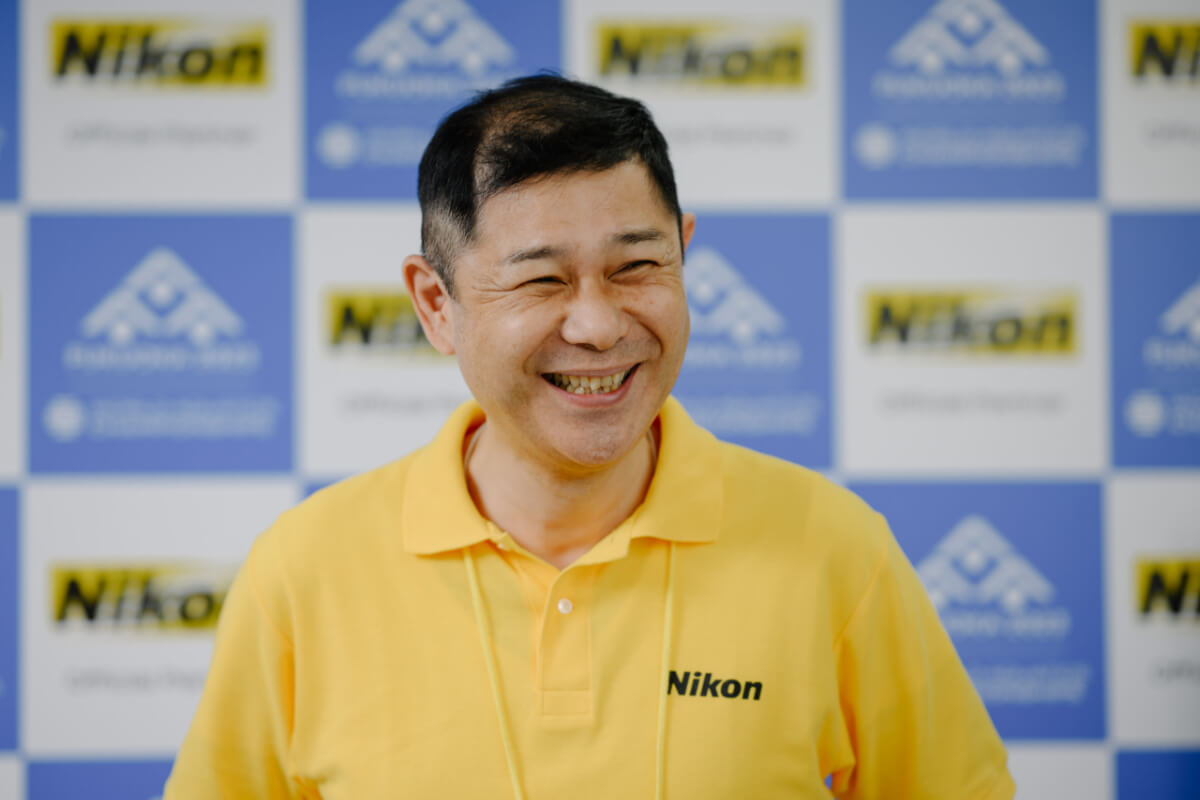
On the Children’s Reactions to the Workshop
Yamada : For the portion where we created the camera grip, we had prepared many examples for students to use as a reference, but they went beyond the ideas provided in the examples and created designs unique to their own imagination and opinions. We were happy to see their reactions, which far surpassed what we were anticipating.
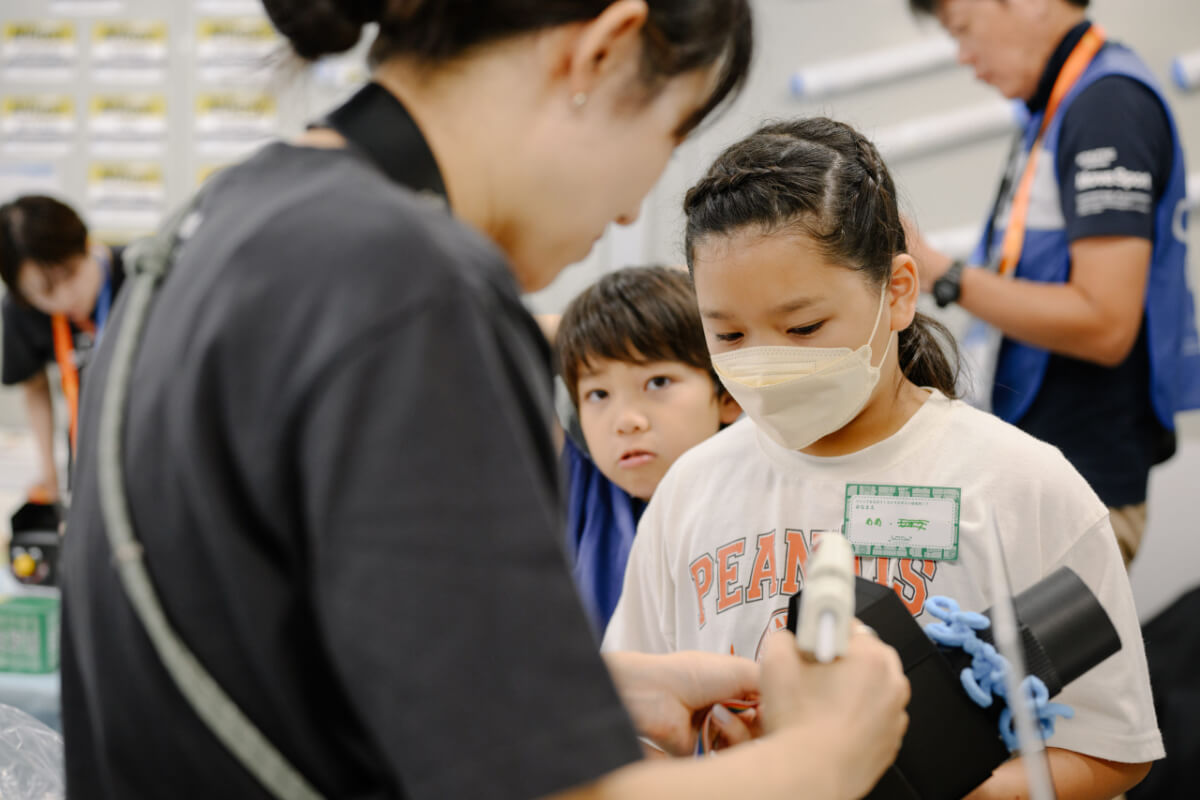
Ohba : The Microscope Workshop shined a spotlight on many different talents, such as students skilled in observing, those who were gifted at sketching, and siblings who would take turns observing to gather more data. Seeing students still at work in their seats even after the end of the workshop helped us to realize the immersive nature and depth of microscopes as a research topic. Interacting with the students and their genuineness gave me a renewed sense of enthusiasm.
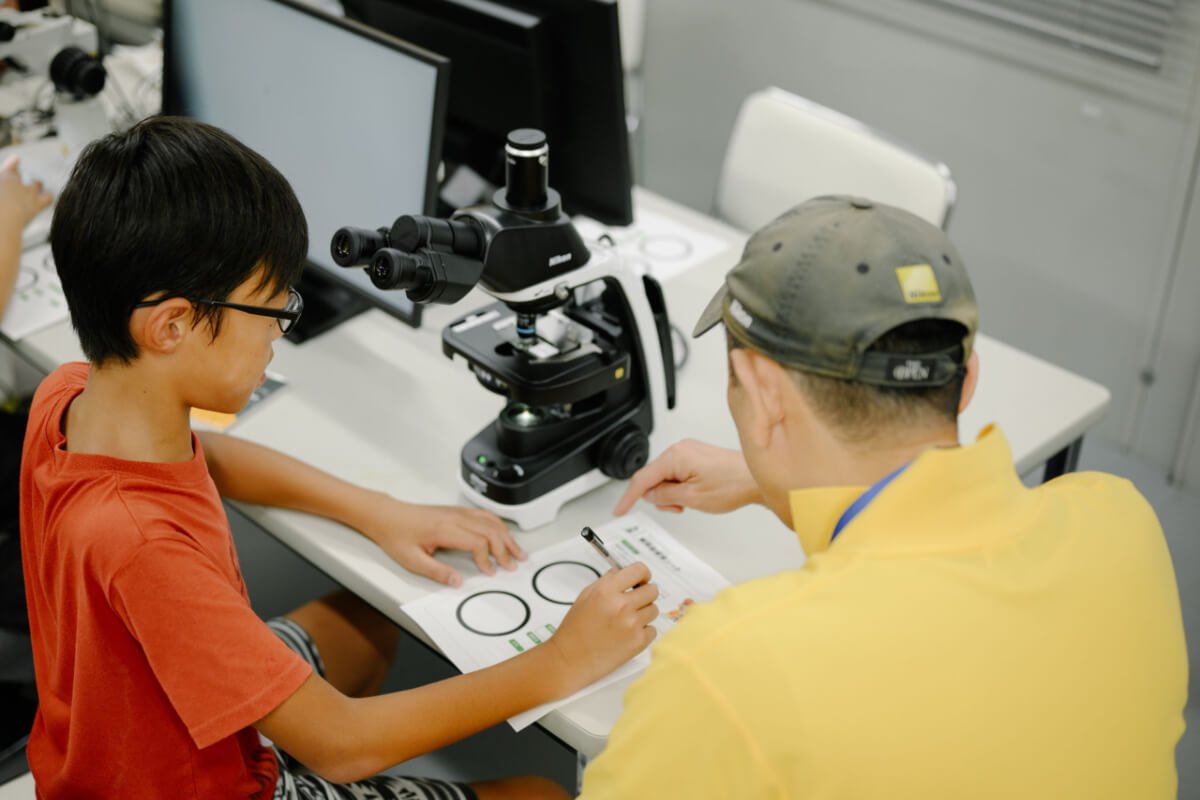
The Purpose of Our Initiatives
Saito:For myself, I would be glad if the experiences during the workshop and the concept of light and design we touched on leaves an impression on the students and lead to something useful in the future. I hope we were able to plant a seed in their memories for them to recall when they’re bigger.
Yamada:In the Camera Workshop, we taught children the “why” and “how” of photography through the original mechanism of the camera. I hope this gives them an opportunity to raise questions and see that there are systems behind “convenience,” and to nurture the curiosity to ask “why” in various scenarios. On a separate note, cameras and design exist all around us in our everyday life. I hope this event taught them that what we see and touch each day have all been designed with a certain function in mind.
Ohba:In this competition, we saw athletes who have battled injuries and illnesses. Microscopes are essential and provide great value even in healthcare worksites and research institutions that work to treat these complications. I hope this workshop spreads information on how microscopes contribute to many people in all kinds of environments.
Future Outlooks and Aspirations
Saito : We hope that through initiatives like these, we can provide the opportunity for people to interact with our products of cameras and microscopes and get acquainted with Nikon products. Similarly, we hope children can find an interest in these products and the many fields related to them.
Yamada : In recent years, STEAM education has gained much attention, and we believe Nikon’s workshop can be developed to nurturing this environment. For example, I believe we can provide even more value if we can offer our program on a larger scale, as a part of an educational institution accessible to more students.
Ohba : It’s been some time since the phrase “Rikei-banare (dissociation from science)” has become known, but I believe it’s important to take part in science from a young age. Not only in the form of studying, but also by interacting with opportunities that can spark interest, just as how the students learned of a new world through the lens of microscopes.
This Children’s Program helped us to see the smiles and curiosity of many young students. We will continue to provide children with unique initiatives through Nikon’s products and services, lending them a hand so they can shine in our society in the future.
*Title and work duties are those at the time of interview


